- Home
- Brian Keene
All Dark, All the Time
All Dark, All the Time Read online
ALL DARK, ALL THE TIME
THE COMPLETE SHORT FICTION OF BRIAN KEENE,
VOLUME 2
TABLE OF CONTENTS
Introduction
Foreword
The Girl on the Glider
Keepsakes
Fetish
Lost Canyon of the Dead
The White Worm
A Darker Shade of Winter
House Call
Scratch
Midnight at the Body Farm
The Black Wave
Alone
Hunting Season
Hide and Seek
Baby Talk
An Appointment Kept
Something Pretty
The Siqqusim Who Stole Christmas
Musings
About the Author
Also by Brian Keene
Copyright
This one is for Jesus. I miss you every day, brother...
My sincere thanks and appreciation to Robert Swartwood, J.F. Gonzalez, Kealan Patrick Burke, Mark Sylva, Tod Clark, Stephen McDornell, the editors whom originally published these stories in their individual form, my readers, and my sons.
JAIL, COWS, SNAKES, TIMING BELTS AND BIGFOOT: AN INTRODUCTION
There was this time when I bailed Brian Keene out of jail...
I’ve never actually bailed Brian out of jail, but I promised him that I would start the introduction to this volume with that line.
Mission accomplished.
Actually, talking about jail is how Brian and I first came in contact with each other. And I bet he doesn’t even remember this.
Picture this: late 1999, maybe early 2000. I’d been dabbling in writing horror fiction for about a decade by that point and had only then become serious about it (prior to this, I was known as an editor of two horror magazines). Having a number of published short stories under your belt and a first novel publication will do that to you. So, of course, I subscribed to all the pertinent zines of the day—Hellnotes and the HWA Newsletter and some email newsletter called Jobs In Hell. Brian used to edit and publish Jobs in Hell, but I’m pretty confident that my initial correspondence with him came prior to this. No, it wasn’t on the Horrornet chatroom, which he and the rest of the Cabal wax nostalgically about. I had an aversion to Internet chatrooms even back then and didn’t want to be bothered with it. I always wondered how folks like Richard Laymon got any work done due to the time they spent in those places. But I digress.
You see, prior to Jobs in Hell, I recall seeing Brian’s byline in a number of places, most likely in Scavenger’s Newsletter, and some small press magazine appearances. His name popped up so regularly that I started to recognize it, even though I hadn’t read anything he’d written by that point. His name was one of dozens I came across during those days. If you were a prolific writer of short stories and essays in the small press, your name got out there quite a bit. And after a few years, Brian’s byline became pretty recognizable to me.
So when I read an essay he wrote on the prison library system and how prisoners really psychologically benefited from receiving books from writers, it immediately struck a chord with me (I don’t remember where this essay appeared; HWA Newsletter maybe?). A few years prior to this, I had a friend who was serving time on drug charges (a stretch that finally got him clean and on the straight and narrow—unfortunately, a motorcycle accident claimed his life eleven years later). During the year my friend was incarcerated I was a publisher, and as a publisher I was able to send him books and magazines under my imprint. He later told me that inmates crave reading material and that everything I sent eventually made its way to the prison library where it was passed around to those who had an interest in reading horror and suspense.
I shot Brian a quick email telling him I enjoyed his article and I was aware of this already due to my formerly incarcerated friend. He replied back with a quick thank you and appreciation. That started our correspondence via email. I probably became a subscriber to Jobs in Hell shortly after that, which was around the time he started it. And I think at one point Brian said, “Hey, didn’t you co-write Clickers? I loved that! And didn’t you used to edit and publish the magazines Iniquities and Phantasm?”
I met him formally at the 2000 World Horror Convention in Denver, CO. I was sick for most of that convention and remember only images—I remember Harlan Ellison yelling at people at one of the hotel restaurants; I remember watching what appeared to be a porno movie at some party; I remember smuggling booze into a con suite party with John Pelan and a bunch of other folks; I remember the carpet of some room being caught on fire at a another party (fire and pornography...hell, that was a great convention!); I also remember something about goats and swimming pools.
Brian figured in some of these adventures. At least I think he did. Every time I think about that convention and try to associate it with Brian, worms pop into my head for some reason. Remember, I was sick for most of the convention and tried to alleviate whatever death plague I’d picked up (probably from Del Howison, the co-owner of Dark Delicacies Bookstore, who I’d travelled with and was rooming with) by drinking absinthe, which only made it worse.
Brian and I stayed in touch after that, mostly through email. When I relocated to the east coast in early 2001, I reached out to him because I had the vague sense that he didn’t live that far from me. It turned out he was only two hours away, which in my neck of the woods is fairly close (five years later he would move a lot closer to me—now we’re just under an hour or so from each other). He also knew a lot about cows, which I had no experience with. You see, I had moved to a rural community. There’s an actual goddamn farm three houses down from me, and you can see a barn and a vast field from my living room window. During that late spring and early summer as I was acclimating to this strange new environment, the weird noises of the cows from across the road were a constant source of consternation, befuddlement, and, later, dire concern. These are not normal cows. They don’t moo. They wail and screech like demons from the bowels of hell. I am not kidding you. Don’t believe me? Ask author Kelli Owen. Go ahead, find her on Twitter and ask her. She lived with me for a month when she relocated out here; she heard it, too.
One day, shortly after I moved out here, I called Brian and asked him what was up with these cows? Why do they make those weird noises? What was their purpose? He thought I was kidding, but I wasn’t. He still thinks I’m joking about this, but he hasn’t heard these cows. Aside from my family, Kelli Owen is the only other person on the planet who can attest to the fact that the cows that live up the street from me are abnormal. There are no other cows like them on the planet. I thought this would appeal to Brian’s fascination with all things weird and paranormal, but for some reason it hasn’t. Brian would rather be looking for Bigfoot than camping out in my backyard in the hope of seeing aliens beam down on the cow barn to begin another round of whatever experiment they conduct that makes them wail and scream like that. So despite what Kelli and I say about the cows, he remains on his mountain retreat waiting for Bigfoot to show up. Besides, Brian never believes anything Kelli says, and about the cows, this is the only subject he pokes fun at me for. Like he has a lot to talk about, him and his goddamn Bigfoot.
Everything else I tell Brian, however, he believes. He may ignore it, but he believes me. He also believes everything our mutual friend, author Geoff Cooper, tells him too. When Coop told Brian that his car’s timing belt ran the digital clock on his dashboard, Brian believed him. I could never do anything that cruel to him, so when I invited him to co-write Clickers II with me, he thought I was going to reveal that I was putting one over on him the way Coop did with the timing belt. I was serious. I couldn’t think of any other writer who would be perfect for that bo
ok. Three books later, we’re contemplating doing more if time allows.
Brian’s sensibility as a writer and his style are very similar to mine. We both came up in the same era: the post-Vietnam 1970’s, and absorbed rock and roll, comic books, and 70’s horror films and novels. We were also both exposed to the classic writers of the genre at a time when this kind of material was all over the place. You can see this in his work, especially the influence of Manly Wade Wellman. The work of Wellman is most noticeable in “House Call”, the lone Levi Stoltzfus story in this volume, but elements creep up in some of the others as well, most notably the novella “Scratch”. The reason? “Scratch” is loosely based on local Pennsylvania folklore, something Wellman was rather an expert in and used extensively in his own stories (folklore in general, not just Pennsylvania folklore), particularly his Silver John stories and his John Thunstone tales, but also his more general horror tales.
(An aside: at some point when I first met him, I probably told Brian that, at one point, I kept a lot of snakes, primarily large boas and pythons. However, by the time I moved to PA I only had two ball pythons, which get no bigger than four feet or so. Yet Brian heard the word “large” and insists to this day that I chased him around my house with a twelve-foot boa constrictor. Actually, if anything, all I did was probably motion toward the room where I keep my snakes and said something to the affect of “my snakes live in there”. See what I have to deal with on a day-to-day basis?)
I am of the mind that Levi Stoltzfus is this generation’s answer to Wellman’s Silver John; Brian needs to write more of them and put them in a collection. I bet if he did, a volume like this would later prove to be as classic a volume as Wellman’s own Who Fears the Devil? Also, I should note here that I have learned more about the Amish from Brian’s Levi Stoltzfus stories than I have seeing them every day in rural Pennsylvania. In fact, I recommend if you are ever going to visit Lancaster County, PA as a tourist, you should educate yourself on the Amish first by reading any of the Levi Stoltzfus works Brian has written.
Also noticeable for influences in these stories are Stephen King, Hunter S. Thompson, Joe R. Lansdale, William Hope Hodgson, M. R. James, Fredric Brown, and Robert Bloch. These are the writers we grew up reading in the late 70’s and early 80’s; maybe not Lansdale so much, since he was just starting out at the time, but I’m sure Brian had to have come across the occasional Lansdale story every now and then back then, just like I did. The other writers though? They were all over the place, figuring pretty prominently in all the reprint anthologies that were being published in that golden era.
These days, reprint anthologies aren’t published the way they were back in the day. That’s a shame.
What I’m trying to say is that the writers who helped shape the field of dark fantasy and horror influenced Brian. Sure, Stephen King and Richard Laymon are probably the primary contemporary influences. But in the early 1980’s, the original incarnation of Weird Tales had only been dead for barely thirty years and a lot of the good material that was published in its pages (and its competitors) was still being reprinted in anthologies that were readily available to those of us who bought every modern horror novel or collection that was published back in the day. Things have changed. The classic Weird Tales school of horror isn’t in vogue with much of today’s scene. The influence on Weird Tales was so big back then, it was still being felt thirty years later in writers like Stephen King, Charles L. Grant, and Karl Edward Wagner, among dozens of others.
While the contemporary horror story formulated by pulp writers like Bloch and Wellman and Matheson and the other Weird Tales writers was hugely influential, by the late 1980’s it was also starting to fall out of favor with a lot of editors in the field. As the years passed, other forms of storytelling and styles took over. Splatterpunk. Cyberpunk. Dark Mystery. Surrealism. New Weird. New Pulp. New Whatever. Brian started placing his early efforts in little magazines by the time contemporary horror had largely fallen out of favor with a lot of publications (Cemetery Dance and the revived Weird Tales still published it, but those were tough markets to crack for beginning writers). Brian persisted though, and some of those early efforts, while clearly showing their influence, also had the spark of not only talent, but evidence of something more: the well-read writer.
Take the opening novella in this collection. “The Girl on the Glider” opens with an epigraph by M. R. James, a man who is probably the greatest writer of ghost stories of the 20th century. And while the ghost in “The Girl on the Glider” is not the typical Jamesian vengeful spirit, Brian utilizes James’s approach and sensibilities in this novella, crafting a ghost story that is unique, original, and completely his. Yet despite the James influence, there’s another influence in this story, too—Hunter S. Thompson.
Thompson’s style, his voice, and especially his gonzo ability of blurring the line between fiction and non-fiction, placing himself firmly within the narrative, are all evident in this tale. Meta-fiction has been around as long as the novel. Its earliest use in the genre of horror was James Hoog’s 1820 novel The Confessions of a Justified Sinner. It’s been used sporadically in horror and dark fantasy ever since, most significantly with Stephen King’s The Song of Susannah and The Dark Tower (volumes 6 and 7 of his Dark Tower series). Brian seamlessly utilizes the meta-fiction approach in this novella, creating a tale that adheres to much of the sensibilities of the ghost story while tapping into his Thompson influenced style of non-fiction, which was most apparent in his Hail Saten blogs of the 2000s (and collected in four volumes). He claims 99% of the novella is true, and I believe him. I remember much of the true parts as they happened.
Much of Brian’s gift as a writer come from the folksy way he has of bringing readers into his world. This is where the King and Lansdale influence shine most strongly (and when he’s using local folklore as a backdrop to his fiction, the Wellman influence too). One influence that doesn’t figure as strongly in this volume is that of the splatterpunk writers of the 1980s (particularly the writing team of John Skipp & Craig Spector). Much of that influence shows up elsewhere in Brian's work, but if you were to lump Joe R. Lansdale in with the splat pack (Lansdale himself disdained the label), then the closest tale in this volume would be “The Siqqusim that Stole Christmas”. The prose immediately puts you in the setting, you immediately know who you’re dealing with in the few opening sentences of dialogue and then we’re off and running into Bizarro territory (if Lansdale doesn’t consider himself a splatterpunk, he surely, if perhaps inadvertently, helped invent the Bizarro sub-genre). “Lost Canyon of the Dead” shows the Lansdale influence very prominently too.
I see that I’ve spent the last three pages doing what I’m supposed to be doing in this Introduction, which is talking about the stories, and the writer, and perhaps putting things into context, whether it’s at a personal level or a critical one. I think I’ve done both here with regards to these stories.
As to the six pages that preceded that where I talked about jail, cows, snakes, timing belts, and Bigfoot, well, that’s usually what you get when you run into Brian and get to talk to him personally. Sure, he’ll talk about his work and his influences, but he’ll also talk about anything under the sun. He has an opinion on everything, even when he’s wrong (which is 50% of the time...or maybe it’s 80% of the time...or 20%, depending on the issue...). With the wrong stuff, he’s so persuasive that he’s right that he’ll get you to thinking his way too, until you’re nodding along, saying, “Well, shit, Brian, we’ve gotta do something about that Chupacabra that’s in your yard”.
That’s part of Brian’s gift as a storyteller—to convince you that there’s dinosaurs lurking beyond that field where there’s a rip into another dimension, or that there really is a giant 300-foot snake that lives in the Susquehanna river in central Pennsylvania, or that there’s a black thing that rides gracefully in the Pacific devouring anything its path; or that an excommunicated Amish man has the gift of healing and magic.
I�
��m done here. Now it’s time for Brian to do what he does best. Sit back, turn the page, and listen to his voice.
Take it, pal. They’re all yours.
J. F. Gonzalez
Lititz, PA
2014
FOREWORD
This is the second book in a multi-volume series that, when finished, will collect every bit of short fiction I’ve ever written—even the bad stuff (of which I think there are many). The only short stories that won’t eventually be included in these volumes are the ones already collected in The Rising: Selected Scenes From the End of the World and Earthworm Gods: Selected Scenes From the End of the World. Obviously, as those books are still in print, it doesn’t make sense to re-collect them again.
The first volume in this series was called Blood On the Page, and it collected a fair cross-sampling of newer and older stuff. I’ve tried to do the same thing with this new volume. If you have at least a passing interest in my work, some of these stories will probably be familiar to you. Others are ones that you’ve most likely never read before. It is my hope that they will give you the same experience I always hope for you—a few minutes of entertainment, a few hours of escape. That’s what books and stories have always done for me, and although writing as an occupation can be hard (as you’ll learn from the first and last stories in this volume) I can’t think of anything I’d rather do for a living, simply because of the fact that I love giving to others what reading has given to me.
Blood On the Page didn’t really have a theme, other than all of the stories were ones that I bled into, investing a part of myself in their telling. All Dark, All The Time follows suit. There is no structured theme, but subconsciously, these are all very dark tales, and if their endings are happy, then it’s a happiness that is muted by shadows. Like the previous volume, I invested myself in several of these stories, particularly “Scratch”, “Fetish”, “Musings”, and “The Girl on the Glider”. You’ll especially see the personal investment with those last two, as you read them. You’ll probably also notice a thematic similarity in those last two, which is why I chose to have them bookend this collection.

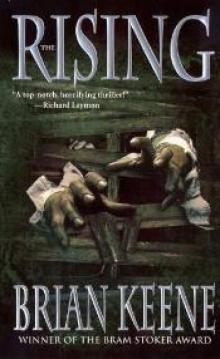 The Rising
The Rising Entombed
Entombed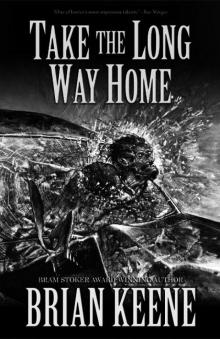 Take the Long Way Home
Take the Long Way Home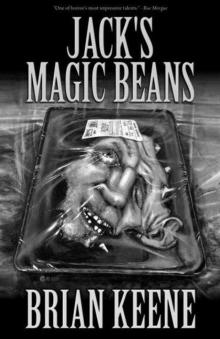 Jacks Magic Beans
Jacks Magic Beans Ghost Walk
Ghost Walk An Occurrence in Crazy Bear Valley
An Occurrence in Crazy Bear Valley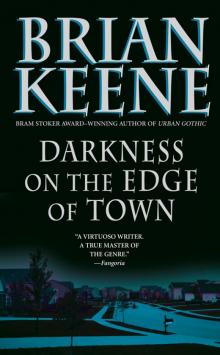 Darkness on the Edge of Town
Darkness on the Edge of Town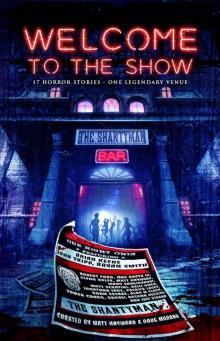 Welcome to the Show: 17 Horror Stories – One Legendary Venue
Welcome to the Show: 17 Horror Stories – One Legendary Venue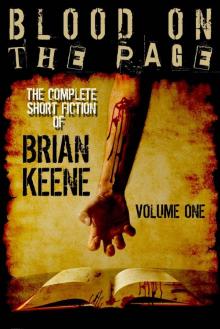 Blood on the Page: The Complete Short Fiction of Brian Keene, Volume 1
Blood on the Page: The Complete Short Fiction of Brian Keene, Volume 1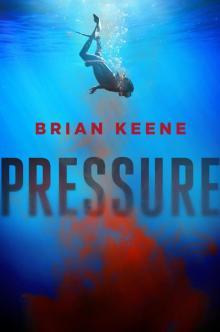 Pressure
Pressure A Gathering of Crows
A Gathering of Crows The Rising: Selected Scenes From the End of the World
The Rising: Selected Scenes From the End of the World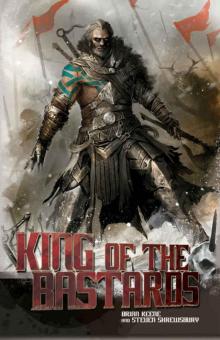 King of the Bastards
King of the Bastards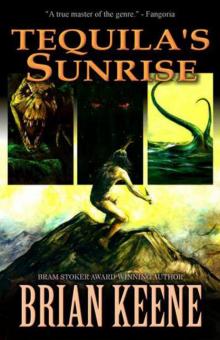 Tequila's Sunrise
Tequila's Sunrise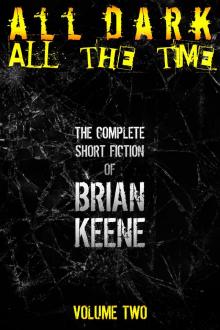 All Dark, All the Time
All Dark, All the Time Where We Live and Die
Where We Live and Die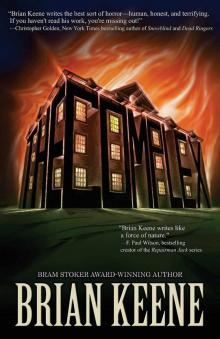 The Complex
The Complex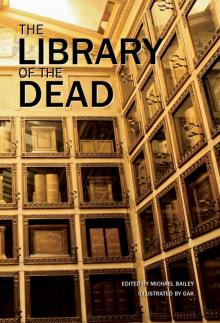 The Library of the Dead
The Library of the Dead The Conqueror Worms
The Conqueror Worms The Girl on the Glider
The Girl on the Glider Urban Gothic
Urban Gothic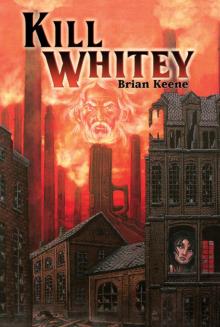 Kill Whitey
Kill Whitey Terminal
Terminal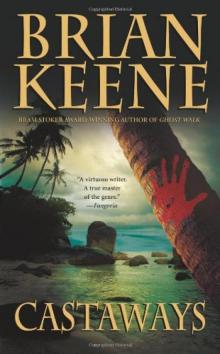 Castaways
Castaways